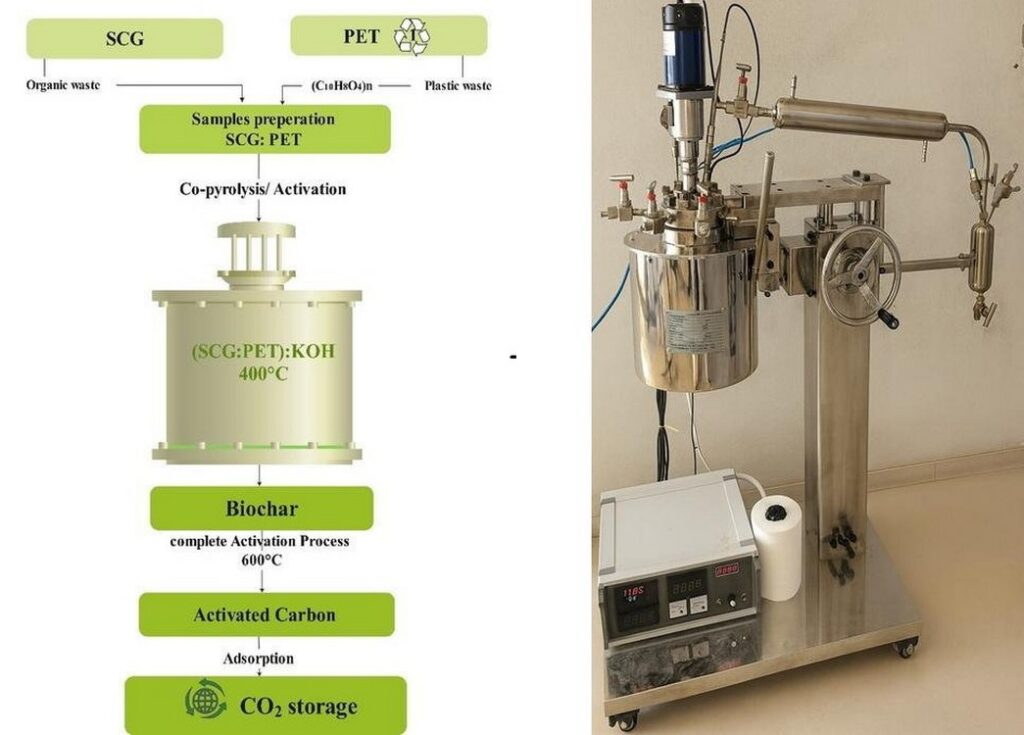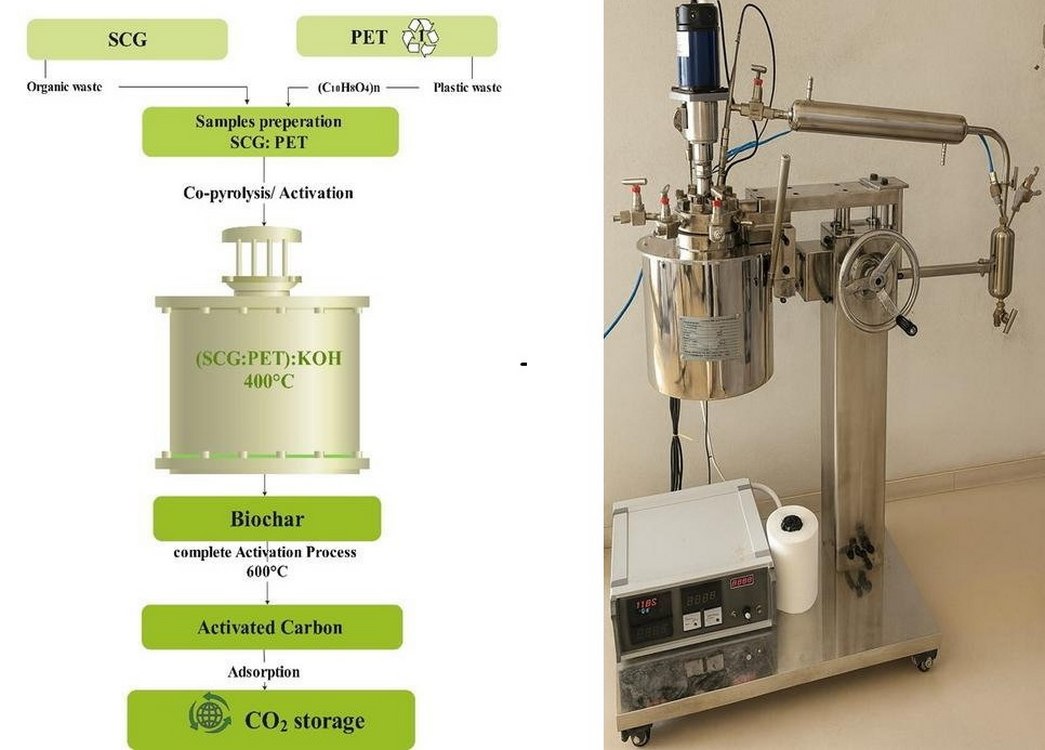 credit Haif Aljomard / SWNS
credit Haif Aljomard / SWNS
A new technology utilizing coffee and plastic waste is designed to capture carbon dioxide from industrial processes before it’s released into the atmosphere, and has been patented by scientists.
The highly novel and detailed method with promising potential to reduce environmental pollution utilizes a blend of spent coffee grounds, polyethylene terephthalate, (PET) and potassium hydroxide, a strong alkaline chemical.
The components together form an effective material for CO₂ adsorption, say the research team based in the United Arab Emirates.
Globally, an estimated eight million tons of spent coffee grounds are discarded annually, mostly ending up in landfills where they emit methane and other greenhouse gases. PET is a member of the polyester family and widely used in consumer packaging.
Potassium hydroxide serves as a powerful activating agent in the process, enhancing the material’s ability to trap carbon, and the researchers at the University of Sharjah combine the three to create activated carbon—a common component in many consumer and industrial products, which when used would trap the carbon.
“What begins with a Starbucks coffee cup and a discarded plastic water bottle can become a powerful tool in the fight against climate change through the production of activated carbon,” boasted study leader Dr. Haif Aljomard.
She says the process operates at an activation temperature of 600 °C, much lower than conventional thermal recycling methods for plastic, and emphasized that the patent presents “significant” findings in the synthesis of activated carbon from waste materials, and the waste-to-resource approach that underpins the technology.
SIMILAR STORIES TO THIS: Concrete Made 30% Stronger by Adding Waste Coffee Grounds–Cutting Emissions and Mining in the Process
“This invention repurposes two abundant waste streams—coffee and plastic—into a high-performance adsorbent,” Dr. Aljomard added. “The resulting activated carbon shows strong potential for capturing CO₂ from fossil fuel-based energy systems, contributing to the reduction of air pollution.”
Activated carbon is utilized in a broad spectrum of industrial and consumer product, including gas purification and drinking water filtration, as well as swimming pool, aquarium, wastewater, and sewage treatment systems.
SHARE This Female-Led Arab Research With Your Friends On Social Media…
